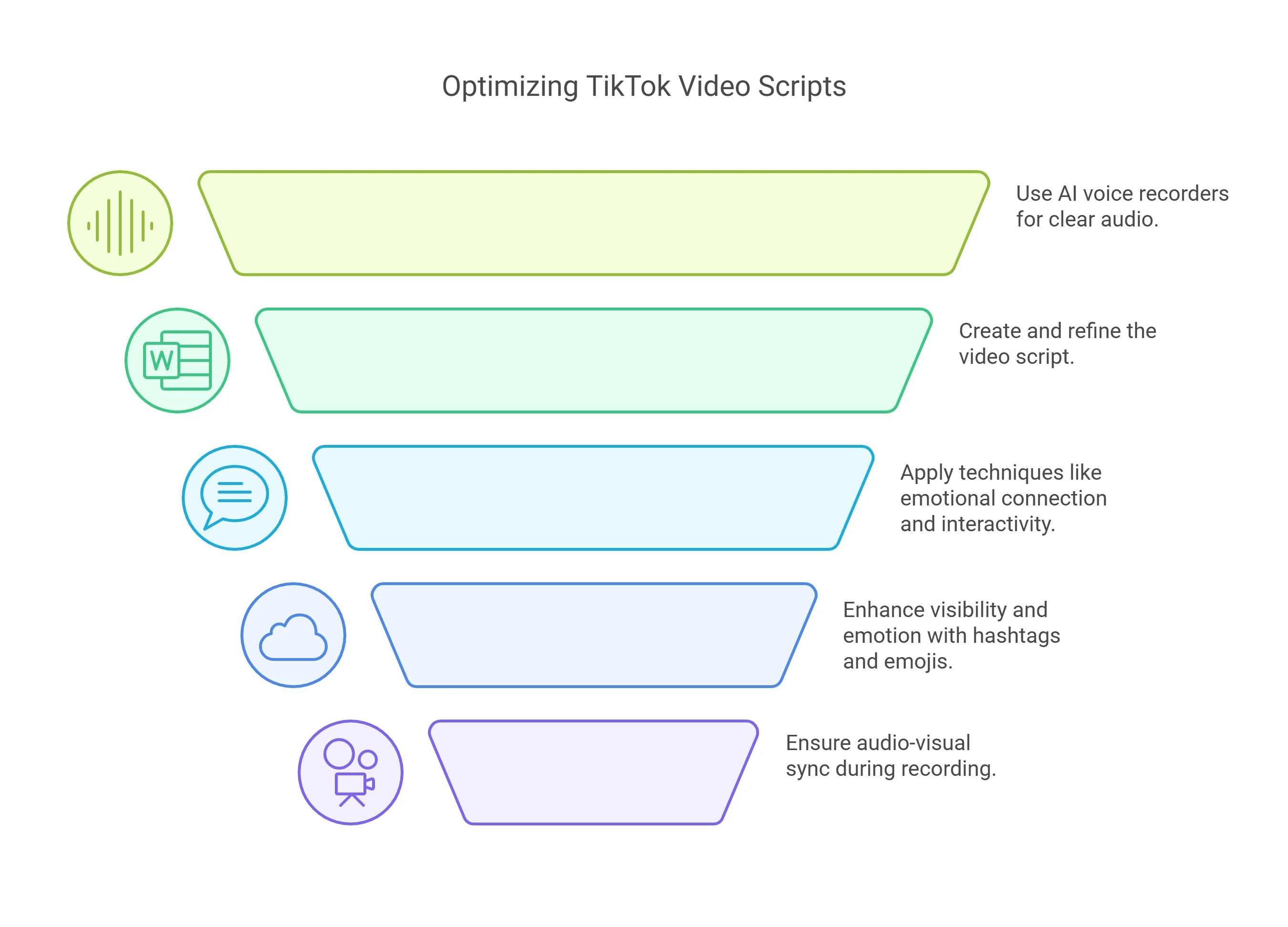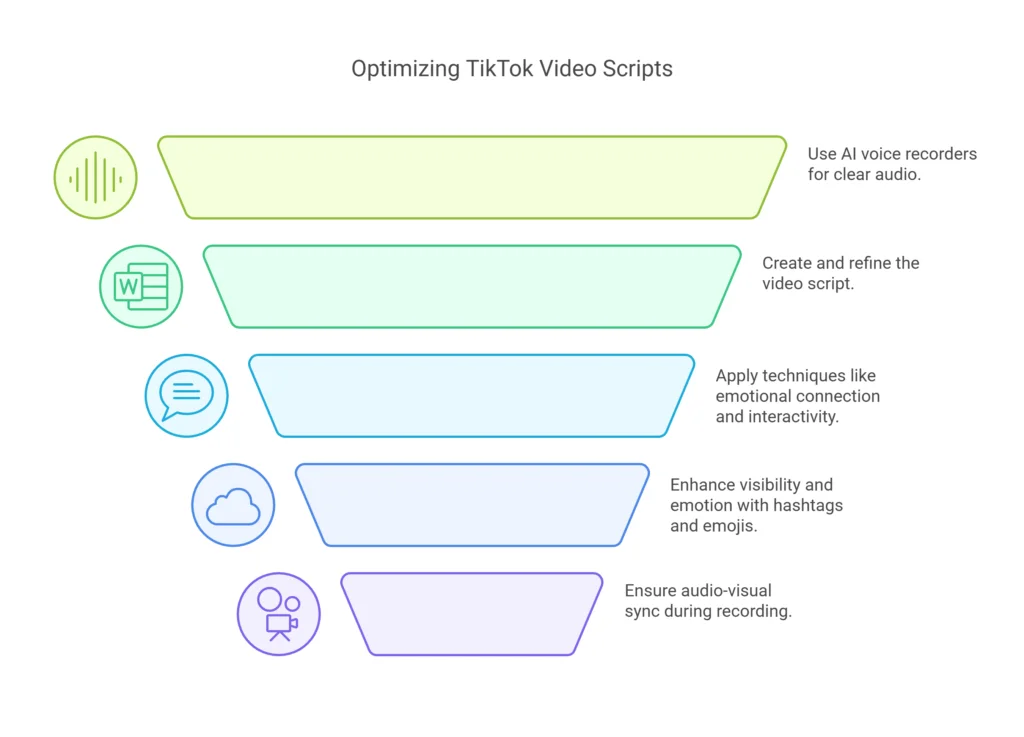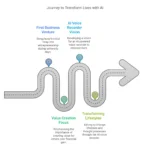
Hello, everyone! Today, I’d like to share some insights with you about optimizing TikTok scripts, specifically how to improve the influence of your videos using effective copywriting templates. This topic is particularly interesting to me because I’m also involved in TikTok content creation, right?
Initially, I didn’t pay much attention to the structure of the text—I just wrote whatever came to mind. But I noticed that my video views weren’t increasing, which made me realize just how important the copy is, especially in high-quality videos that capture viewers’ attention with just a few sentences. These videos often make people want to like and save the content, right?
So, today, I’ll dive into how these TikTok copywriting templates are structured and how they can be optimized. First, let’s understand where these templates come from. For example, after recording a video that you think is decent, along with the audio, this is where the template comes into play. It adjusts the content based on the video and the mood of the audio, making the entire video look more professional and appealing.
Speaking of which, I just thought of something—artificial intelligence voice recorders can actually be a huge help in this process! For example, you can directly record the audio of your video using a voice recorder. This not only captures the content of the video but also makes it easier for you to rewrite and optimize the script later on. Plus, this method is super convenient because you can place the video behind the recorder, capturing clear and crisp audio without worrying about syncing issues. This approach is incredibly practical, isn’t it?
Now, let’s dive deeper into how to optimize these copywriting templates. I believe there are a few key points that are particularly important:
1. Opening Design
This is crucial because the opening directly determines whether the video captures the viewer’s attention. For instance, some videos start with unexpected questions like, “Can you believe it?” or use exaggerated expressions like, “This is absolutely crazy!” These types of openings make you want to keep watching, right? So, the beginning of your script must be engaging—it should either create suspense or use an exaggerated tone to grab attention, making viewers think, “This video is definitely something special.”
2. Emotional Connection
Great copy isn’t just about attracting viewers; it’s also about creating an emotional bond with them. For example, using humor can make the audience feel entertained, while using empathetic language can make them feel understood. I recall a video where the creator used a lot of humor, and the comments were flooded with people laughing and saying, “This video is exactly my vibe!” That’s such a positive feeling, isn’t it? So, emotional elements in your copy are essential.
3. Interactive Guidance
Interactivity is another key aspect of copywriting. For instance, asking a question at the end of the video like, “How do you usually handle this?” encourages viewers to leave comments in the section. This not only increases engagement but also makes the video feel more dynamic. I remember asking a question in one of my videos, and the comment section exploded with replies—it was so lively, right?
4. Hashtag Selection
Choosing the right hashtags can’t be overlooked. Hashtags increase your video’s exposure by making it easier for people to find your content. For example, if your content is about food, you might use hashtags like #FoodRecommendations or #HomeRecipes. Plus, TikTok has specific rules for hashtags, such as keeping them under 150 characters. This makes sense because TikTok videos are short, and viewers won’t stick around for lengthy text, right?
5. Use of Emoji
Emojis play a significant role in enhancing your copy. For instance, adding 😂 when describing something funny makes it easier for viewers to grasp the emotion. However, it’s important not to overdo it—too many emojis can disrupt the reading experience, right?
6. Video Recording and Optimization
I also faced a challenge where the audio and visuals were out of sync during recording, making the video feel disjointed. I later discovered that ensuring clear audio and syncing the visuals with the audio is key. This is where the advantages of AI voice recorders shine! They help capture clear audio, generate scripts quickly, and even mimic the tone and style of the video, significantly boosting efficiency. Plus, the scripts generated by these recorders serve as a solid foundation for further optimization, making the entire process much smoother and more enjoyable.
In conclusion, optimizing TikTok scripts requires attention to detail, but with the right techniques and the help of AI tools, I’m confident you’ll create better videos. Honestly, this process feels almost like creating a piece of art—every tweak brings the video closer to perfection, right?
I hope today’s sharing was helpful to you all. Thank you for tuning in!




